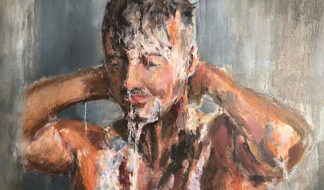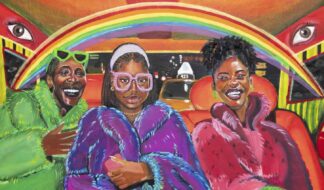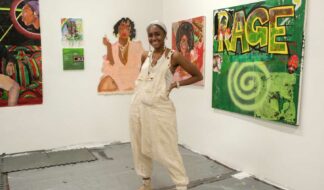Why You’ve Probably Never Heard of Edward Brezinski, a Gay Michigan Artist Who Desperately Wanted to Become Famous
‘Make Me Famous’ doc explores the strange, sometimes sad ‘70s and ‘80s art scene
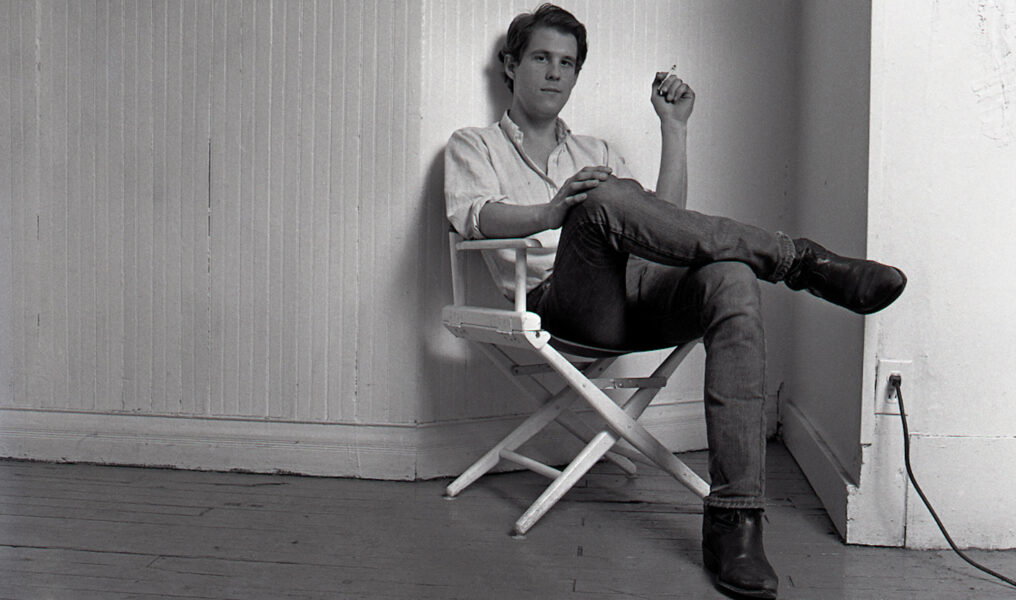
You’ve likely never heard of the late, gay 1980s neo-expressionist painter Edward Brezinski, though he was a contemporary of famous artists like Jean-Michel Basquiat and Keith Haring. A new documentary, “Make Me Famous,” set for a special screening presented by Cinema Detroit at the Scarab Club Sept. 27, explores why, despite Brezinski’s talent and outsize personality, he failed to achieve widespread recognition.
A Michigan native, not much of Brezinski’s early days are known. We do know that his last name was originally Brzezinski, which he changed after moving to New York, and that he was an only child, believed to have grown up in Chesterfield Township. Brezinski’s mother died when he was just a teenager, and his father was a draftsman for General Motors.
For a time, Brezinski lived in Midtown near the Detroit Institute of Arts. He was a regular visitor to the museum and, according to a friend, considered it his sanctuary. When he skipped town is unknown. He headed first for San Francisco, but it was once he’d settled into New York’s then-infamous Lower East Side that he made his tenuous claim to fame.
“The documentary is not intended to lift up Brezinski to the levels of importance as Basquiat and Haring,” said director Brian Vincent. “Rather, it is an opportunity to experience the madcap 1980s art scene through the lens of a striving artist.”
Vincent said that Brezinski’s career parallels the rise and fall of what is arguably the last great explosion of interest in art in New York City. “So his life and career offer us a chance to examine the era and to give the viewer a story [where] they won’t know what will happen. His career does not outshine the era.”
Yes, the era. The art scene in the Lower East Side, a handful of years before it was the setting of the hit play “Rent” and a handful of years after it produced another Michigan native, singer Madonna.
“I was a little kid when this was happening,” said Paula Guthat of Cinema Detroit. “It’s so fascinating to go back. It’s almost unimaginable what the Lower East Side was like. A burned-out, poverty-stricken area. It’s so expensive now to live where these people were squatting in a building.”
The film, said Guthat, “takes a lot of different themes and weaves them together in this really fascinating story. I think it’s really kind of a feat.”
So, just who was the man behind the fascinating tale? A tall, good-looking and talented painter who “was gay and fiercely proud to be so,” said Vincent. “He was tough and not afraid to stand up for himself. He was a trained artist who wanted to make a deep impression with his art. But he also had many personality traits that made him memorable, but also held him back in key moments.”
Guthat summed it up like this: “He was irreverent. I think some things he did, it was self-sabotage.”
Guthat tells the story, which is recounted in the film, of Brezinski asking a fellow artist to sit for him twice. Both times, Brezinski destroyed both of the portraits he had created, believing them to be inferior. “He just did things every so often that don’t make sense. He seemed to be a bit troubled. He wanted fame, but he also did things that sort of guaranteed he would not become famous.”
Brezinski hurt his cause — his quest for recognition and fame — more often than not. Though mental illness is not brought up in the film, a study of Brezinki’s actions makes it appear that it could have been an issue. Then there is the question of his art. Was it actually good enough to make him famous?
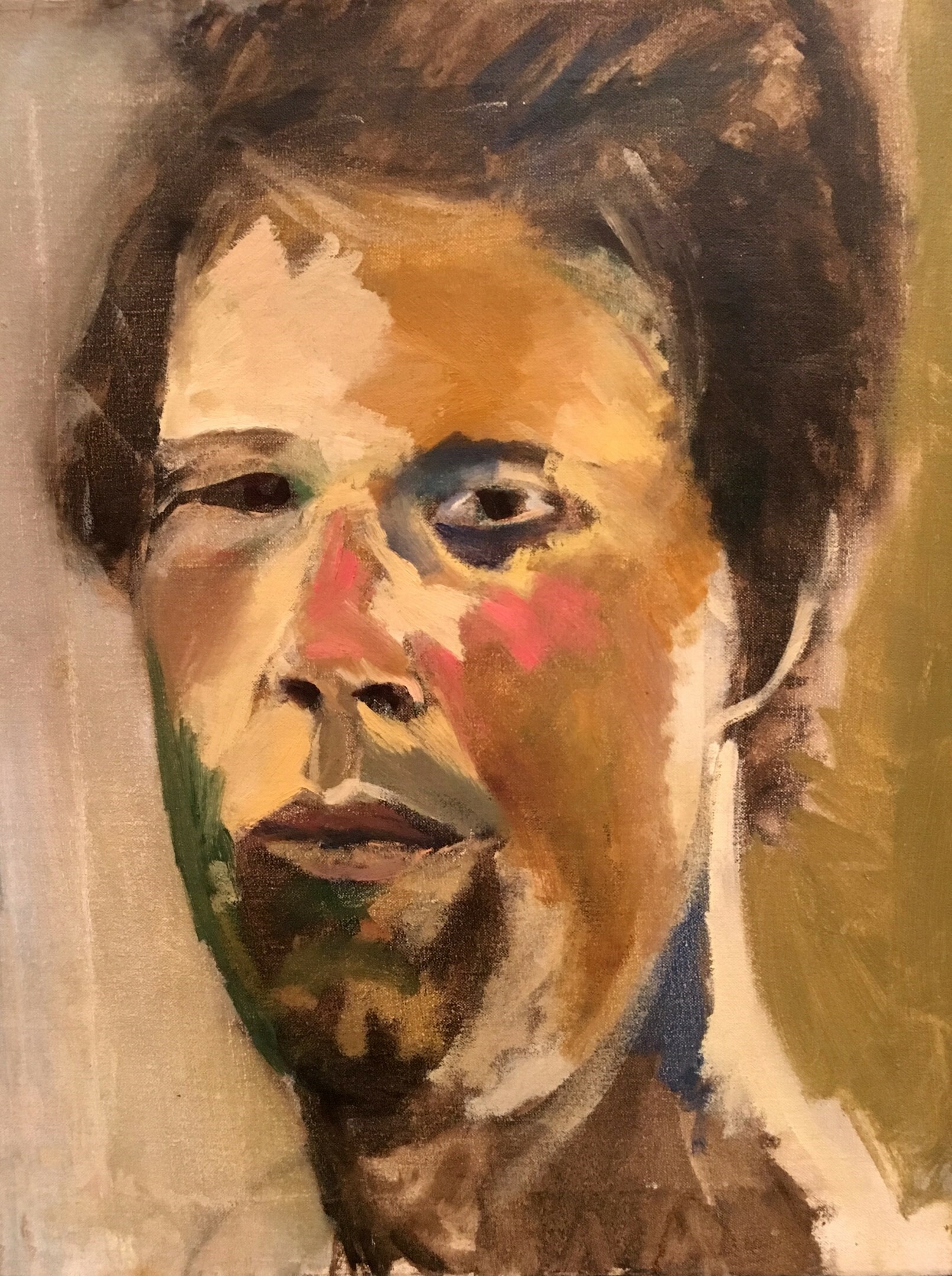
“Through the lens of his life, we’re looking at a few important questions,” said Guthat. “One of them is why certain artists succeed and become ‘famous,’ and others don’t. Also, how people are remembered. There are all sorts of amazing interviews in the film with people who were there. They kind of contradict each other, and that’s fascinating.”
So fascinating that Vincent, who studied acting at Juilliard, and his partner and wife, producer Heather Spore, who starred in “Wicked” for a decade, decided to take on the role of filmmakers to tell his story.
“We began researching his career and why didn’t he get famous, and we went out into the community of artists from the 1980s and we met them,” Vincent said. “They hadn’t thought of Edward in years and were sort of flabbergasted we were interested but relieved it wasn’t about Basquiat and Haring, who they were used to fielding questions about.”
Vincent and Spore discovered a trove of never-before-seen videos that Brezinski had encouraged a videographer, Jim C., to film in the ‘80s. Also, “there were mysteries about him that could only be solved by investigating. And that’s when we knew it was a movie and not a play, and that’s how we became filmmakers,” said Vincent.
The result is a film The Guardian called a “touching documentary [that] revisits the grimy Manhattan of the ‘70s and ‘80s in search of long-lost painter Edward Brezinski.” But it doesn't only explore the mysteries of his beginnings, but also his curious ending. His body was allegedly discovered deceased in France in 2007. The filmmakers travel to the French Riveria looking for Brezinski’s grave and his illusive death certificate, causing viewers to wonder if he actually faked his own death.
In the end, viewers are left to their own devices to decide Brezinski’s artistic merit. His struggle was certainly not unique.
“I think there is a heroism within artists,” said Spore. “The fact that they get up every day and create art is a wonderful thing for our society. This is a story about a local Michigan artist that made a deep impression on his community of artists that he worked alongside. It is a humorous and touching story of a man versus himself. That is something every artist can understand.”
A special screening of “Make Me Famous” will take place Wednesday, Sept. 27 at the Scarab Club, located at 217 Farnsworth St. in Midtown. Tickets are $15 and can be purchased in advance at bit.ly/464tkLj.

